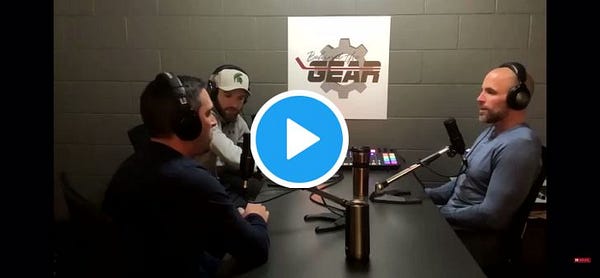The Difference Between Having Assets vs Utilizing Assets
Using assets to create competitive advantages on the ice
Speed - alone - is not enough. If it were, Michael Grabner and Carl Hagelin would be superstars. Today we are going to use speed as an example, but this can be applied to any other asset that players possess.
Having Assets vs Utilizing Assets
Skating fast is an asset. Changing speeds is utilizing that asset.
While skating fast all the time to “play fast” is admirable, we would argue that it is misguided. How players utilize those assets, such as speed, and the timing of when to apply those assets is the critical element to creating competitive advantages.
A few months ago on the Hockey IQ Podcast, we had on Dwayne Blais. Dwayne is a skills coach with the Washington Capitals and London Knights and runs Total Package Hockey (TPH) + National Skill Development Association (NSDA). He understands what makes great hockey players.



If a player skates fast all the time then they become easy to defend.
Easy to predict and match speed
Skating themselves into bad spots
Weaponizing the Assets
This type of conversation is the impetus for why we came up with Hockey’s Arsenal… weaponizing our assets on the rink to gain competitive advantages.
Speed is weaponized in terms of a speed differential, the difference in speed between players.
Speeding up while the others are slowing down (Can overtake with pace)
Slowing down while others are speeding up (Space becomes available underneath)
When players become unpredictable, they have the ability to manipulate their opponents and create massive competitive advantages.
Watch Jesper Bratt below. He slows up, draws in the defender, then takes two strides to accelerate into a breakaway. That’s weaponizing your speed asset.
One more example, Connor McDavid skating at a slower pace in order to draw the defender close while maintaining space behind the defender that he can skate into after accelerating.
Playing Fast
“Playing fast” has become a catchphrase in the coaching and hockey community. Yet, very few understand what is meant by playing fast. Most players and people assume that playing fast means skating fast. But that is simply not the case.
Playing fast is directed not by those carrying the puck, but those off the puck creating speed differentials. It’s this movement off the puck that makes the quick passing play possible.
Watch here as Tampa Bay’s Tyler Johnson moves quickly to gain speed off the puck and enables his team to play fast. He creates a speed differential with the opponents away from the puck. That’s weaponizing your speed asset.
Difficulty in coaching fast players
As a coach, there is a difficulty in getting through to young players that have always been faster than their competition. These players have seen success by being faster and it becomes their solution for every situation. Before you know it, that play has become one dimensional and can no longer be effective when other players inevitably catch up.
When a player understands how to change their speed, it can open up a whole different element to their game. For example, Patrick Kane is known for having the most elite ‘delay game’ in the NHL along with being a worldclass playmaker.
Through Kane’s youth hockey career, he was primarily a goal scorer. It wasn’t until he started delaying and changing speeds that his elite vision and playmaking become a hallmark of his game. Simply slowing his pace changed his game into the trademark style we know today.
Another great way to weaponizing a player’s skating is for players to manipulate a defender’s feet. Getting players to focus on manipulating opponent’s skates is a great way to challenge faster players.
A simple slow-up tactic can completely change how a player processes that game. This is something that can take a good player and make them great.
It’s not enough to simply have assets, it’s how players utilize them that counts.
Further reading - Read how linear crossover can help players change speed and create offense.
Did you enjoy this newsletter?
Help us spread the ideas within and share it with the people you care about







